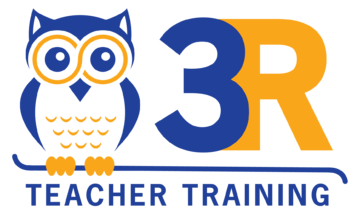Every classroom invariably has a few students struggling with reading, stumbling over words their peers breeze through. As teachers, our hearts go out to these children, and we often grapple with finding the best strategies to help them. A significant portion of these struggles can be attributed to dyslexia, a misunderstood condition. This article delves into the heart of dyslexia, backed by the insights of the Science of Reading.
Dyslexia is a specific learning disability characterized by difficulties with accurate and/or fluent word recognition, often stemming from a deficit in phonological processing. Contrary to some beliefs, it's not about seeing letters backward or simply a learner who learns at a nontypical rate.
I remember a typical learner, Emily, who would brilliantly articulate her thoughts orally but stumbled with reading simple sentences. It wasn't a lack of intelligence or effort but rather a neurological difference.
Modern neuroscience, with tools like fMRI, shows that people with dyslexia process reading tasks in a different area of the brain than typical readers. This difference in brain activity is linked to challenges in phonological processing, the ability to recognize and manipulate the sounds of spoken language. Dyslexic students might exhibit difficulty with spelling, slow reading speed, or challenges in sounding out unfamiliar words. Teachers should also be aware of more subtle signs, like avoidance of reading aloud or frustration with written tasks.
While dyslexia is a significant cause of reading difficulties, not every struggling reader is dyslexic. It's essential to understand the root cause of a child's challenge, whether it's dyslexia, another learning disability, or external factors like a lack of prior education. The struggles of a student like Emily were rooted in phonological processing. While she could grasp complex concepts, the primary task of connecting sounds to letters became an uphill task. This is a common trait in those with dyslexia, where even simple words might not be automatically recognized.
The earlier we can identify and support dyslexic students, the better their academic outcomes. Early intervention can help children build the foundational skills they need, making later education smoother and more effective. For dyslexic students, a structured approach to literacy that emphasizes explicit instruction in phonology, sound-symbol association, and syllable types can be transformative. I adopted the Wilson approach with Emily, a multisensory, structured literacy program. Over time, the change was evident. Emily started to decode words with increasing confidence.
Involving sight, sound, and touch in teaching can reinforce reading skills for dyslexic students. Simple tools, like sand trays or finger tracing, can be powerful aids in learning. Regular assessments can pinpoint where a student is struggling, allowing for targeted interventions. It's not about labeling but understanding and aiding our students. Emotional support is paramount. Celebrate small victories and ensure students like Emily know their worth isn't tied to reading speed. Promote understanding among peers. Books like “Thank You, Mr. Falker” by Patricia Polacco can spur classroom discussions about dyslexia and compassion.
As educators, we must continue to learn. Collaborate with specialists, attend workshops, and always stay abreast of the latest research. Our students' futures hinge on our commitment to education, not just theirs but ours as well. Dyslexia isn't a hurdle to success. With understanding, evidence-based interventions, and persistent effort, our students can and will thrive.

